Linda Rodriguez's Blog, page 11
March 6, 2014
EVERY HIDDEN FEAR Available for Pre-Order and More Writers of Color
I've been missing from this blog for a while, I'm afraid. I've been fighting illness for months, and now that I'm back, I've got a backlog of posts to make in my Books of Interest by Writers of Color series--a new anthology from Allison Hedge Coke, new books from Kimberly Becker, Julia Aragon Fatula, Denise Low, Kim Shuck, and Frances Washburn. So stay tuned for those over the next couple of weeks. But first, I have great news on my own homefront.
My third Skeet Bannion novel, Every Hidden Fear, is now available for pre-order. It will be published on May 6, 2014, and the launch party will be at 11:00 a.m. on Saturday, May 10, and co-sponsored by Mysteryscape and Border Crimes chapter of Sisters in Crime. I'll be joined by my friends, Sally Goldenbaum and Lisa Harkrader, who also have books publishing on May 6, and we're plotting some grand fun. More later on that. Right now, here's the scoop on Every Hidden Fear and how to pre-order it. And save your receipt if you do, because I'll be posting a pre-order contest in the next week and that receipt can enter you for prizes and fun giveaways.

EVERY HIDDEN FEAR Minotaur Books ISBN 978-1250049155
Available for Pre-Order NOW
(For signed copies) Rainy Day MysteryscapePowell's IndieBound Amazon Barnes & Noble
Skeet Bannion's Cherokee grandmother has come to live with her and her teenage ward Brian, and Skeet is still trying to adjust to the change while also keeping the peace on the local college campus. Then Ash Mowbray, a bad boy from the wrong side of the tracks, comes back to Brewster as a wealthy developer, pushing plans to build a shopping mall on the outskirts of town that will destroy the town square businesses. The town council is split on his proposal, and emotions are running high.
Mowbray makes things worse by announcing that he is the real father of the high school athlete Noah Steen, having left Noah’s mother, Chelsea, pregnant as a teenager when he fled town after high school. Chelsea and her husband Elliott are horrified that Mowbray has publicized that Elliott is not Noah’s father and afraid that he will steal their beloved son from them. Noah is shocked to learn the truth of his parentage and furious with Mowbray. It’s not long before Mowbray turns up murdered with Noah as the prime suspect. Brian and Noah's girlfriend Angie turn to Skeet to find the murderer and save their friend.
Every Hidden Fear is a thrilling and emotionally-resonant mystery, told by a masterful writer in full command of her craft.
ADVANCE PRAISE FOR EVERY HIDDEN FEAR
“I love Skeet Bannion! The talented Linda Rodriguez's new cop in town is tough, smart and wonderfully vulnerable. This suspenseful and sensitive tale of small town secrets is captivating from page one. An absolute page-turner!” – Hank Phillippi Ryan, Agatha, Anthony and Mary Higgins Clark award winning author
I love the gorgeous cover they've once again given me for this book! And this book is a real favorite of mine. It's probably the most emotional Skeet book yet--and we all know Skeet doesn't do emotional well, at all.
I'll be posting a pre-order contest soon, and after that, I'll put up an excerpt of the book for you all to read. If I can manage the time, I'd like to put up a page about the Kansas City restaurants that are mentioned in each book since people ask about them so much (and my husband wants to do more "restaurant research.") So stay tuned for all of that, plus posts in the Books of Interest by Writers of Color series.
My third Skeet Bannion novel, Every Hidden Fear, is now available for pre-order. It will be published on May 6, 2014, and the launch party will be at 11:00 a.m. on Saturday, May 10, and co-sponsored by Mysteryscape and Border Crimes chapter of Sisters in Crime. I'll be joined by my friends, Sally Goldenbaum and Lisa Harkrader, who also have books publishing on May 6, and we're plotting some grand fun. More later on that. Right now, here's the scoop on Every Hidden Fear and how to pre-order it. And save your receipt if you do, because I'll be posting a pre-order contest in the next week and that receipt can enter you for prizes and fun giveaways.

EVERY HIDDEN FEAR Minotaur Books ISBN 978-1250049155
Available for Pre-Order NOW
(For signed copies) Rainy Day MysteryscapePowell's IndieBound Amazon Barnes & Noble
Skeet Bannion's Cherokee grandmother has come to live with her and her teenage ward Brian, and Skeet is still trying to adjust to the change while also keeping the peace on the local college campus. Then Ash Mowbray, a bad boy from the wrong side of the tracks, comes back to Brewster as a wealthy developer, pushing plans to build a shopping mall on the outskirts of town that will destroy the town square businesses. The town council is split on his proposal, and emotions are running high.
Mowbray makes things worse by announcing that he is the real father of the high school athlete Noah Steen, having left Noah’s mother, Chelsea, pregnant as a teenager when he fled town after high school. Chelsea and her husband Elliott are horrified that Mowbray has publicized that Elliott is not Noah’s father and afraid that he will steal their beloved son from them. Noah is shocked to learn the truth of his parentage and furious with Mowbray. It’s not long before Mowbray turns up murdered with Noah as the prime suspect. Brian and Noah's girlfriend Angie turn to Skeet to find the murderer and save their friend.
Every Hidden Fear is a thrilling and emotionally-resonant mystery, told by a masterful writer in full command of her craft.
ADVANCE PRAISE FOR EVERY HIDDEN FEAR
“I love Skeet Bannion! The talented Linda Rodriguez's new cop in town is tough, smart and wonderfully vulnerable. This suspenseful and sensitive tale of small town secrets is captivating from page one. An absolute page-turner!” – Hank Phillippi Ryan, Agatha, Anthony and Mary Higgins Clark award winning author
I love the gorgeous cover they've once again given me for this book! And this book is a real favorite of mine. It's probably the most emotional Skeet book yet--and we all know Skeet doesn't do emotional well, at all.
I'll be posting a pre-order contest soon, and after that, I'll put up an excerpt of the book for you all to read. If I can manage the time, I'd like to put up a page about the Kansas City restaurants that are mentioned in each book since people ask about them so much (and my husband wants to do more "restaurant research.") So stay tuned for all of that, plus posts in the Books of Interest by Writers of Color series.
Published on March 06, 2014 10:57
December 13, 2013
Stereotypes and Reality: An Old Story for Indigenous Peoples

A high profile movie, Out of the Furnace, just came out this past weekend. As so many movies and books do, it gives a totally false representation of American Indians, in particular the Ramapough tribe (Lenape) in the mountains of New York and New Jersey. This is old news, of course, though this movie appears to be particularly awful about negative stereotyping of its Indian characters
In a New York Timesarticle, http://www.nytimes.com/2013/12/12/nyregion/new-film-out-of-the-furnace-accused-of-stereotyping-ramapough-indians.html?smid=fb-share&_r=0 the chief of the Ramapough, Dwaine C. Perry, says of the movie, “The undertones are racist and personal.” The filmmakers even used common last names among the Ramapough for the villains, and several other minor characters are listed in the film credits as “Jackson White.” This is a pejorative term used by the white community against the Ramapough for generations and thus is tantamount to using the N-word to list nameless African American walk-on characters.
“As is the case with most films, the filmmakers conducted research and drew upon their own personal life experiences in creating an original screenplay, and the story and the characters are entirely fictional,” a statement by the film’s production company, Relativity Media, stated when confronted with the accusations of racist stereotyping. This is one of the problems with people writing about a culture they don’t belong to and haven’t taken the time to truly learn about. I’ve written about it before on this blog. http://lindarodriguezwrites.blogspot.com/2012/04/literary-mystery-noveliststony.html In such cases, all that winds up on the page or the screen are caricatures and falsehoods that have been perpetuated—sometimes by anthropologists, even—for decades and centuries.
Unfortunately, this film was last weekend’s third-highest-grossing film. Local elected officials and school personnel stated that they have been battling pervasive discrimination and stigmatization of Ramapough children in the surrounding community, only to have new outbreaks occur in the wake of this movie. Because the film shows Ramapough Indians involved in an illegal fight ring (which is totally false), they fear that groups of teens who have seen it will drive out to the remote mountain area where the tribe lives looking for Ramapough kids to fight. This is the problem with these books and films that just use tribes and individual Indian characters for exoticism and “color.” They reinforce and shore up ages-old prejudices against us and cause very real damage with lasting effects.
 The thing about this film is that it’s so bad, so blatant and in-your-face about its stereotyping, that it makes an irrefutable example. No person of good mind can defend this kind of thing. But other movies and books are more subtle in their caricaturing of Indigenous cultures and therefore harder to fight against. They diminish and denigrate the cultures they ostensibly are representing through their own ignorance of those cultures. But it’s like the teams that use the Indian mascot names and yet claim to be “honoring” us. Eventually, the appropriation and exploitation of Indigenous cultures leads to blatantly racist actions such as that taken by the owner of a Sonic drive-in in Belton, Missouri.
The thing about this film is that it’s so bad, so blatant and in-your-face about its stereotyping, that it makes an irrefutable example. No person of good mind can defend this kind of thing. But other movies and books are more subtle in their caricaturing of Indigenous cultures and therefore harder to fight against. They diminish and denigrate the cultures they ostensibly are representing through their own ignorance of those cultures. But it’s like the teams that use the Indian mascot names and yet claim to be “honoring” us. Eventually, the appropriation and exploitation of Indigenous cultures leads to blatantly racist actions such as that taken by the owner of a Sonic drive-in in Belton, Missouri. I have never believed that writers should be censored from writing about any topic they feel drawn to write about. But—and this is a huge and important caveat—if they are going to write about another culture, they should take the time and make the effort to try to understand that culture, preferably through honest relationships with people who are living within that culture and not solely through books by others who are usually perpetuating falsehoods and negative stereotypes. And they should be ever aware of the problems of appropriation of another’s culture. Indians are real human beings currently living in this world. We are not extinct and therefore fair game for anything writers want to invent. We don’t exist simply so that some novelist or screenwriter can have an exciting, “different” subject about which to write their books and films.
As I wrote in that earlier blog post in greater detail, this is a thorny issue. What are your thoughts on it?
NOTE: Still can’t comment on my own blog. So I will respond to comments by revising the blog below.
RESPONSES TO COMMENTS:Denise, I don't believe that about the owner being a chief petty officer in the Navy and the sign referring to that. These racists always have to try to have some explanation, no matter how farfetched or lame it is. The whole thing was directed at Indigenous folks and referenced a number of denigrating stereotypes that are actually laughing references to the genocide our folks endured. Thank you for bringing this film issue to my attention. We need to stay on top of these things.
Alan P., yes, and unfortunately Cooper was nowhere near the worst. It's strange. I'm Cherokee and Choctaw and write a mystery series with a Cherokee protagonist, so I get constant emails from people who've self-published (mostly romance) novels with "hunky," "dark," "exotic" (all direct quotes form the authors' descriptions to me) heroes who are half-Navajo/Cherokee/Sioux/Apache/or just-plain-Indian, wanting me to blurb or review them. The covers always show half-naked dark, long-haired men in full warbonnets (though the Navajo and the Cherokee never wore them). Why in hell are these people who obviously know nothing about these tribes writing about them?
Diana, do you see the problem with the Boy Scouts and their Tribe of Mic-O-Say, though? All these fake Indian things diminish the cultures of real people. And then you get teams like the Chiefs, who used to use a fake Indian avatar in a warbonnet. (I'll admit I don't know if they still do or not.) It's a matter of having respect for living peoples who are not extinct, no matter how much white America tried to make that our fate or might wish we were.
Published on December 13, 2013 09:02
November 27, 2013
Thoughts on Hunger, Poverty, and Violence at Thanksgiving

This Thanksgiving I encourage everyone to give as generously as they can to their local food banks. With the economy the way it has been for years now, local food banks have been strapped, often running out of food to give to families in need long before the end of each month. Now, with the millions who’ve been thrown off food stamps added to their constituencies, food banks are the only thing between stark hunger and many families with elders and/or children and families of actively serving members of the military. Food banks are stretched way beyond what they can do.
I keep hearing how the economy is growing stronger, and the stock market certainly seems to show that. People are making a killing by speculation once again. But what about all those who lost their jobs in the shedding of millions of jobs that’s taken place in the last few years or all those who lost their homes (often the same people) or those who’ve had to take medical bankruptcies (again, in the millions)? What about the people whose food stamps have been cut or those whose Meals on Wheels won’t be there to help give them at least one real meal a day, all thanks to Congress’s decisions against the poor? What about the people who are not on Wall Street or giving millions to Congress? What’s the economy like for these people?
I live on the “wrong” side of Troost Avenue in Kansas City, the poor side, the dark side, of this street that divides this city, racially and socioeconomically. The people in my neighborhood and the neighborhoods around us were suffering severely for at least three years before the economic crisis hit the stock market and was finally declared. It seems we only worry about the economy when it adversely affects the well-off. What does that say about us as a country?
I remember the riots of the 1960s. More people would do well to remember them. If you’re not old enough or weren’t aware enough when they occurred, Google them. And imagine them now, with the gang population in many cities much larger than it was then, with automatic weapons in the hands of much of the population. There is frustration, hopelessness, and anger of that immensity that is building in this country right now.
The riots of the 1960s were a wake-up call for the United States. As a country, we set up programs to deal with the poverty and hopelessness and racism that brought them about—programs that brought more people of color and people from poor backgrounds into the middle class than ever before, programs that brought medical care, nutritional care, education, job training and many other good things to what were essentially bad places to live one’s life.
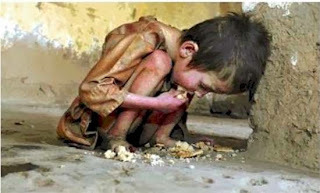
In recent years, we’ve been dismantling the structure of safety-net services and programs that we set up after those riots. Things have been peaceful through the decades of greed. No one’s been pitching bottles or breaking windows. So we take—and take and take—from the poor and the working class and, now, even the middle class and give it all to the wealthy and the corporations. We don’t listen when people protest. The country turns its back.
My husband once knew someone who was writing a thesis called “Violence Works.” The point being exactly what a British rioter told an MSNBC reporter back after the London riots of 2011. He pointed out that the press wouldn’t be there if they weren’t being violent, that a few months earlier thousands had marched peacefully to protest, and the media had totally ignored them. If you look at the U.S.’s history, you’ll see plenty of proof of that, as well. Basically, it is when people can’t take it any longer and erupt in violence that we, as a country, wake up and do something to improve the situation. Most of our social improvements have followed that chain of events.
When we wipe out program after program designed to help people pull themselves and their families out of poverty, we are playing with fire. When we ignore the damage the economy sustains from short-sighted greed until the damage spreads to the wealthy—and then provide bailouts only to the powerful—we say something about what kind of country we are and what we value. Maybe it’s time we took a look at what we truly value versus what we say we value. What kind of a country do we want to be? We are creating the future now.
As we sit at our Thanksgiving feasts, I hope we’ll all spare some thought for those who have no Thanksgiving feasts. Give to your local food banks. Volunteer to help. And give some thought to what kind of country we are becoming. If you don’t like the greedy, callous picture that conjures, give some serious thought to how we can change it without waiting for violence to force our hand.
Replies to Comments
Stacy, since Blogger won't let me comment on my own blogs (*rolls eyes and throws up hands in despair*), I have to edit the blog itself to respond. You are so right that hunger is rampant, and it is within our power to end it, certainly within this country. Instead our elected government seems dedicated to pushing more and more people out of the "just barely making it" category and into the "everyone goes to bed hungry" category. We did great work toward ending hunger and vastly decreasing poverty in this country over forty years ago, work that we've been dismantling for the past decade. That's not the direction we should be going.
Published on November 27, 2013 09:21
November 16, 2013
Homemade Holidays
 It’s that time of year again. Halloween’s just over, and the Christmas decorations and gifts are already out. In this part of the country, they were out in some stores a couple of weeks before Halloween. Did they jumpstart Christmas before Halloween where you live, as well?
It’s that time of year again. Halloween’s just over, and the Christmas decorations and gifts are already out. In this part of the country, they were out in some stores a couple of weeks before Halloween. Did they jumpstart Christmas before Halloween where you live, as well?I don’t like starting the decorations and carols this early, but in one way I welcome the reminder that the winter holidays are closer than we want to think. (It’s “winter holidays” at our house because we’re a blended family and celebrate Christmas, Hanukah, and Winter Solstice here.) If I remember in time and am not traveling, I like to make some gifts to give.
 Detail of tapesty-woven shoulder purse I happen to be quite skilled at spinning, knitting, crocheting, sewing, and (not quite so skilled at) weaving. When I had more time and was more naïve, I used to make gifts for almost everyone on my gift list. My time became more limited, and at the same time, I discovered that a number of the people I gave gifts really had disdain for anything handmade—until they saw how much something similar actually cost. (Hint, since I use original designs, luxury fibers and fabrics, and have been studying and practicing these arts for years, comparable items can be very expensive.) At that time, I began to design and make things only for the people I loved who appreciated such work.
Detail of tapesty-woven shoulder purse I happen to be quite skilled at spinning, knitting, crocheting, sewing, and (not quite so skilled at) weaving. When I had more time and was more naïve, I used to make gifts for almost everyone on my gift list. My time became more limited, and at the same time, I discovered that a number of the people I gave gifts really had disdain for anything handmade—until they saw how much something similar actually cost. (Hint, since I use original designs, luxury fibers and fabrics, and have been studying and practicing these arts for years, comparable items can be very expensive.) At that time, I began to design and make things only for the people I loved who appreciated such work.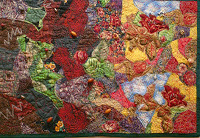 Detail of large art-quilt wall hangingThis leaves me with a sister, son, daughter-in-law-to-be, husband, a couple of friends, and my agent and editor to which to give handmade gifts—if I begin early enough. My sister, son, and other son’s fiancée also give me lovely handmade gifts for which I’m truly grateful, for which I’m truly grateful because I know how much time, effort, and money go into such gifts.
Detail of large art-quilt wall hangingThis leaves me with a sister, son, daughter-in-law-to-be, husband, a couple of friends, and my agent and editor to which to give handmade gifts—if I begin early enough. My sister, son, and other son’s fiancée also give me lovely handmade gifts for which I’m truly grateful, for which I’m truly grateful because I know how much time, effort, and money go into such gifts.Making homemade gifts is not necessarily a cheapskate activity. I make mine from high-quality cashmere, alpaca, quiviut, angora, mohair, brocades, silks, and satins, none of which are cheap at all. My sister makes me gorgeous bed and lap quilts from expensive beautiful combed cottons. My son knits with the same kind of fibers I use. My other son’s fiancée makes a wide variety of original, high-quality household items from topnotch materials. All of these gifts are much nicer than anything we’d buy to give.
 Shawl of alpaca, cashmere, merino/silkI’m glad there are still a few people within my inner/family circle who treasure handmade gifts—and a few who even give them. For me—raised by a generation of people who knew how to use their hands to make things for use and enjoyment—the holidays will always be in some small measure the time for handcrafted gifts and homemade goodies from the kitchen. There’s something very gratifying about knowing someone has taken the time and effort to make you something with their own hands rather than simply order online or rush through a store snatching up presents.
Shawl of alpaca, cashmere, merino/silkI’m glad there are still a few people within my inner/family circle who treasure handmade gifts—and a few who even give them. For me—raised by a generation of people who knew how to use their hands to make things for use and enjoyment—the holidays will always be in some small measure the time for handcrafted gifts and homemade goodies from the kitchen. There’s something very gratifying about knowing someone has taken the time and effort to make you something with their own hands rather than simply order online or rush through a store snatching up presents. I realize this makes me old-fashioned, and even I have had years lately when the crush of obligations has left me without the time to make gifts for everyone I wanted to. But this holiday season I’ve laid in some incredibly soft, hand-dyed alpaca/silk to spin and knit into gifts and an assortment of luscious luxury fibers to combine in others. A few people in my life are going to be very lucky.
I realize this makes me old-fashioned, and even I have had years lately when the crush of obligations has left me without the time to make gifts for everyone I wanted to. But this holiday season I’ve laid in some incredibly soft, hand-dyed alpaca/silk to spin and knit into gifts and an assortment of luscious luxury fibers to combine in others. A few people in my life are going to be very lucky.What about you? Do you give handcrafted gifts? Do you like to receive them? What are your big holiday gift-giving plans?
NOTE: My not being able to comment on my own blog continues to be a problem, and I continue to seek the solution. If you leave a comment, I will edit the blog to feature my response to your comment at the bottom. SO FRUSTRATING, BLOGGER!
REPLIES TO COMMENTS
Gaylin, I still like to make goodies to give.I haven't encountered anyone who's turned up his/her nose at
homemade candy and cookies.
Mary, you will love weaving! Watch out for the looms that will take over your house.But you can weave on anything. That tapestry purse that you see above was woven on a cardboard box with a lid. (I like trying out primitive weaving methods.) Weaving is a great way to make lovely gifts--table runners, place mats, dishtowels, scarves, tapestry wall hangings, bags.
DebRo, anyone who can't appreciate yummy, homemade goodies is brain-dead. Now, I can understand that someone might have dietary restrictions, that's different. I think too many people try one craft and find it difficult and think they can't do any. Everything's hard when you're first learning it. Some things are easier for some people. I can crochet and knit, but I'd always prefer to knit. It's a better fit for me. But I've crocheted rugs, table runners, and afghans where you want a sturdier or thicker fabric.
Published on November 16, 2013 18:03
October 31, 2013
Review—THROUGH THE EVIL DAYS by Julia Spencer-Fleming
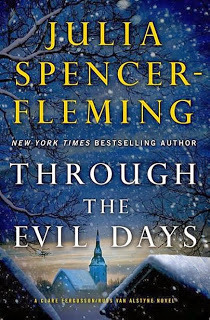
As I promised on Tuesday’s blog about award-winning mystery novelist, Julia Spencer-Fleming, http://lindarodriguezwrites.blogspot.com/2013/10/literary-mystery-novelistsjulia-spencer.html, today I’m reviewing Spencer-Fleming’s newest novel, Through the Evil Days (St. Martin’s Press/Minotaur Books). And I must confess, I approached this with trepidation. Spencer-Fleming is one of my favorite writers, and her last book, One Was a Soldier, was an absolute tour de force. If you haven’t read it, run, don’t walk, to your nearest bookstore or online marketplace or library and grab it. This was Spencer-Fleming’s most ambitious book in a series of ambitious novels, and it was superbly executed. I frequently recommend it to others as the best book, fiction or nonfiction, that I’ve seen on the situation of the soldiers who are sent back again and again to Iraq and Afghanistan, the damage with which they return, the harm the corrupt private corporations involved in these wars do to those soldiers, and the way in which we as a country let them down when they return home with physical, mental, and emotional wounds.
Consequently, I was as nervous about reading Through the Evil Days as I was eager for it. Would it be a letdown after the great achievement of One Was a Soldier? How could she continue after a triumph like that? Probably these same questions gnawed at Spencer-Fleming and contributed to the longer-than-usual gap between these two books. I needn’t have worried, however. Spencer-Fleming really is one of the finest writers practicing today, and it shows in her newest novel.
Through the Evil Daysopens with explosive arson, a double murder, the abduction of a little girl, and a dog that has failed in his attempts to guard his home and people. That’s a lot to happen in less than two pages, and it slams the reader right into the book. From there, we move to the protagonists, Rev. Clare Fergusson and Chief Russ Van Alstine, who are dealing with Clare’s PTSD and the alcohol and drug abuse it caused, as well as her unexpected pregnancy, stressing their brand-new marriage as much as her battle-induced problems since Russ adamantly has no desire for a child. Even as they travel to the crime scene in their professional capacities, others are plotting threats to their positions as Episcopalian priest and chief of the Millers Kill police force. There is plenty of suspense to keep the reader turning the page to find out what will happen to the child and to these two likable but flawed characters.

This book offers more than suspense, however, even though the suspense is taut and the plotting is complex with unforeseen twists throughout the book. Spencer-Fleming examines the massive illegal drug trade in the United States today and the corruption that its huge amounts of money brings into our society, the problems that women still face in the workforce, the struggles facing towns and cities in this time of austerity as they try to keep providing necessary services, and the difficulties of actually helping children in the custody of parents who are negligent or abusive. She faces these issues unflinchingly and shines a dispassionate light on all of them through her characters and their actions and responses.
Spencer-Fleming has given us another book with characters who come alive on the page, nonstop suspense, and surprising plot complications, all presented in lucid, intelligent prose. Through the Evil Days is another winner and will undoubtedly be nominated for the mystery genre’s top awards.
Through the Evil Daysis available for pre-order now, and Spencer-Fleming is holding a contest in which everyone who pre-orders the book will receive an autographed original manuscript page and be entered in a drawing for a 16GB KINDLE Fire HDX. See her website, http://www.juliaspencerfleming.com/, for details.
Published on October 31, 2013 12:12
October 29, 2013
Literary Mystery Novelists—Julia Spencer-Fleming

Award-winning, bestselling Julia Spencer-Fleming’s eighth book, Through the Evil Days, will be published November 5th and is now available for pre-order. This is an exciting event for her many fans who have been waiting eagerly for this book. The goal of this blog series, Literary Mystery Novelists, is to introduce my blog readers who read primarily literary fiction to mystery writers who write wonderful literary novels that are marketed as mysteries, and Spencer-Fleming, who has won or been a finalist for all of the major awards in mystery, is one of the primary examples of that crossover. Therefore, today I’ll introduce my readers to Spencer-Fleming’s stellar career, and then Thursday, I’ll review this newest book, Through the Evil Days.
Spencer-Fleming has won the Agatha, Anthony, Macavity, Dilys, Barry, Nero Wolfe, and Gumshoe Awards and has been an Edgar and Romantic Times RC Award finalist. Her books have routinely garnered high critical praise from the New York Times, the Chicago Tribune, the L.A. Times, the Washington Post, Publishers Weekly, Booklist, Kirkus, and other major review outlets.
Spencer-Fleming burst on the mystery scene with In the Bleak Midwinter, her first novel in the Clare Fergusson and Russ Van Alstine mystery series which won the initial St. Martin’s Press/Malice Domestic Best First Traditional Mystery Novel Competition over 230+ competing entries. Her books are set in small town, Millers Kill, and the surrounding countryside of upstate New York. She says, “That part of New York, where poor farms and Saratoga money and the mountains all come together, has always held a bone-deep fascination for me.” Her series features Clare Fergusson, former Army combat helicopter pilot turned Episcopalian priest in her first parish, and Russ Van Alstine, longtime Millers Kill police chief and former military policeman.
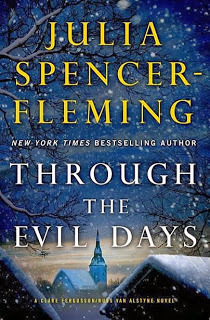
Spencer-Fleming’s characters are beautifully drawn real human beings, and in these books, the countryside including and around Millers Kill becomes another character with its long, devastating winters where the ice, snow, and cold make everything more difficult and can all too easily kill. “You realize how snow and ice can rule your life,” Spencer-Fleming says. “The weather, like any well-written villain, is both fascinating and deadly.”
Her lyrical prose helps to bring to life the densely textured world of her books, and her complex plots grow out of her characters’ needs, obsessions, fears, and secrets in a satisfyingly organic manner. Her books are always deeply moving as they examine thorny issues of modern American life, such as what our current wars waged on the cheap are doing to the soldiers who shoulder the burden, what drives undocumented migrant farmworkers and the many mom-and-pop farms that hire them for peanuts, what happens when environmentalists bent on saving the pristine wilderness battle large timber corporations and small local businesses are caught between, and many more. Yet, subtle humor threads its way through all of the books, no matter how serious their issues.
The New York Times Book Review has said of her writing, “Julia Spencer-Fleming… brings new airs and graces to the traditional small-town mystery.” Repeatedly, reviewers have noted that Spencer-Fleming’s books are as intelligent as they are suspenseful and enthralling. She brings all the strengths of the mystery genre—great suspense, complicated plot twists, and narrative drive—together with the devotion to well-drawn characters and a perceptive, lyrical prose style to create masterful novels.
To learn more about Spencer-Fleming or her books, check out her website. http://www.juliaspencerfleming.com/ She also blogs at the wonderful, witty group blog Jungle Red Writers http://www.jungleredwriters.com/ Spencer-Fleming can also be found on Facebook https://www.facebook.com/pages/Julia-Spencer-Fleming/177457288939862 and on Twitter https://twitter.com/JSpencerFleming
And check back here Thursday for my review of her forthcoming book, Through the Evil Days.
NOTE: Blogger still won't let me comment on my own posts (though I can comment on other Blogger blogs--go figure!). I'm still trying to correct this problem. Therefore, please be aware that I may not be able to respond to your comments right away. *sigh*
Published on October 29, 2013 10:04
October 12, 2013
Part II--Road Trips, the Brooklyn Book Festival, the Hudson Valley Writers Center, and Wichita Public Library
In Part I, I told of our trip to reach NYC in time for Brooklyn Book Festival events and our thrill-filled ride to the venue for my great panel, “Six Degrees of Separation."
 After my panel and signing, were completed, Ben and I wandered outside to see the vendors—over 200 gathered on the plaza outside the Brooklyn Borough Hall. Along the way, we ran into friends and fellow Macondistas, Erasmo Guerra and Ron Drummond. Since we only had a short time for lunch before I was scheduled for a reading at the Las Comadres/La Casa Azul Bookstore booth, we hit a nearby coffee shop for lunch. While we were eating and catching up with Erasmo and Ron, Sergio Troncoso appeared. Sergio is a dear friend, and we were scheduled to read at the Hudson Valley Writers Center that evening. He’d generously offered to drive Ben and me to Sleepy Hollow where the center’s located. So it was lovely to meet him for lunch.
After my panel and signing, were completed, Ben and I wandered outside to see the vendors—over 200 gathered on the plaza outside the Brooklyn Borough Hall. Along the way, we ran into friends and fellow Macondistas, Erasmo Guerra and Ron Drummond. Since we only had a short time for lunch before I was scheduled for a reading at the Las Comadres/La Casa Azul Bookstore booth, we hit a nearby coffee shop for lunch. While we were eating and catching up with Erasmo and Ron, Sergio Troncoso appeared. Sergio is a dear friend, and we were scheduled to read at the Hudson Valley Writers Center that evening. He’d generously offered to drive Ben and me to Sleepy Hollow where the center’s located. So it was lovely to meet him for lunch.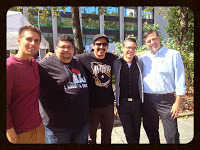 Soon enough, we headed back to the huge square full of vendors’ booths where both Sergio and I were to read at the Las Comadres/La Casa Azul Bookstore booth. The festival was so full of attendees (over 45,000) that, at times, it was hard to move around freely, but eventually we got to our destination. This reading had been organized by two dynamic women who are doing wonderful things for Latino literature—Nora Comstock of Las Comadres National Latino Book Club and Aurora Anaya-Cerda of La Casa Azul Bookstore. They had collected a terrific group of writers to read—Carlos Andrés Gómez, Tim Z. Hernandez, Lulu Delacre, Sergio, and me. Also gathered there were supporters of Las Comadres, La Casa Azul, and us individual writers, plus the amazing writer and activist, Rich Villar. It was a delight to see Rich again, since the last time we’d met had been at AWP in Boston in March.
Soon enough, we headed back to the huge square full of vendors’ booths where both Sergio and I were to read at the Las Comadres/La Casa Azul Bookstore booth. The festival was so full of attendees (over 45,000) that, at times, it was hard to move around freely, but eventually we got to our destination. This reading had been organized by two dynamic women who are doing wonderful things for Latino literature—Nora Comstock of Las Comadres National Latino Book Club and Aurora Anaya-Cerda of La Casa Azul Bookstore. They had collected a terrific group of writers to read—Carlos Andrés Gómez, Tim Z. Hernandez, Lulu Delacre, Sergio, and me. Also gathered there were supporters of Las Comadres, La Casa Azul, and us individual writers, plus the amazing writer and activist, Rich Villar. It was a delight to see Rich again, since the last time we’d met had been at AWP in Boston in March. 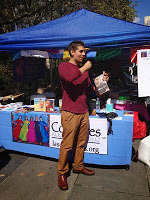 As Nora played emcee, many other festival attendees stopped and gathered around to hear the reading, which Carlos Andrés Gómez kicked off with a brief discussion about his memoir,
Man Up: Cracking the Code of Modern Manhood
, and a warm poem about his grandmother. I had not been familiar with his work, but I’ve been blown away by him. Watch this video made of one of his poems to see how powerful his work is. http://www.youtube.com/watch?v=cKMhp7hpYIs&feature=youtu.be
As Nora played emcee, many other festival attendees stopped and gathered around to hear the reading, which Carlos Andrés Gómez kicked off with a brief discussion about his memoir,
Man Up: Cracking the Code of Modern Manhood
, and a warm poem about his grandmother. I had not been familiar with his work, but I’ve been blown away by him. Watch this video made of one of his poems to see how powerful his work is. http://www.youtube.com/watch?v=cKMhp7hpYIs&feature=youtu.be 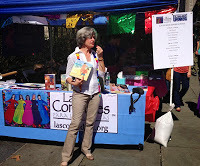 Lulu Delacre was next. Lulu is not only a talented writer but a truly gifted painter. Her bilingual books for children are illustrated with her own lush paintings and are absolutely gorgeous. She’s part of the rise in gorgeous bilingual books for children that’s taking place in the U.S. today. When my own children were young, it was nearly impossible to find books like these. Now, parents, grandparents, and teachers have wonderful options like Lulu’s books to give to their children and students. http://www.luludelacre.com/
Lulu Delacre was next. Lulu is not only a talented writer but a truly gifted painter. Her bilingual books for children are illustrated with her own lush paintings and are absolutely gorgeous. She’s part of the rise in gorgeous bilingual books for children that’s taking place in the U.S. today. When my own children were young, it was nearly impossible to find books like these. Now, parents, grandparents, and teachers have wonderful options like Lulu’s books to give to their children and students. http://www.luludelacre.com/
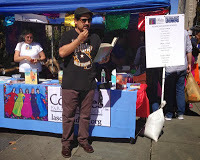 I spoke a little about my latest book, Every Broken Trust, and noticed that the crowd around our reading kept growing. Next up was Tim Z. Hernandez, who’s researched and written about Bea Franco, “the Mexican girl” in Jack Kerouac’s On the Road. Tim’s book, Mañana Means Heaven, tells the story of her life including but beyond her relationship with Kerouac and paints an evocative portrait of the world in which she lived. Tim’s research on this book was meticulous, and he read to us Franco’s moving final letter to Kerouac. http://timzhernandez.com/reviews/
I spoke a little about my latest book, Every Broken Trust, and noticed that the crowd around our reading kept growing. Next up was Tim Z. Hernandez, who’s researched and written about Bea Franco, “the Mexican girl” in Jack Kerouac’s On the Road. Tim’s book, Mañana Means Heaven, tells the story of her life including but beyond her relationship with Kerouac and paints an evocative portrait of the world in which she lived. Tim’s research on this book was meticulous, and he read to us Franco’s moving final letter to Kerouac. http://timzhernandez.com/reviews/ Our reading ended with Sergio Troncoso speaking briefly about his latest book, Our Lost Border, which he co-edited with Sarah Cortez. (See the account of our reading below for a link to a video of Sergio reading from this book.) Afterward, we all stayed to sign books and take photos with fans and friends. There continued to be crowds at the booth, looking at the many books La Casa Azul Bookstore had on display and available for sale. This bookstore is a real treasure in New York City with its heavy community involvement, its wide range of programming, and its strong support of writers and readers. http://www.lacasaazulbookstore.com/
Our reading ended with Sergio Troncoso speaking briefly about his latest book, Our Lost Border, which he co-edited with Sarah Cortez. (See the account of our reading below for a link to a video of Sergio reading from this book.) Afterward, we all stayed to sign books and take photos with fans and friends. There continued to be crowds at the booth, looking at the many books La Casa Azul Bookstore had on display and available for sale. This bookstore is a real treasure in New York City with its heavy community involvement, its wide range of programming, and its strong support of writers and readers. http://www.lacasaazulbookstore.com/Soon enough, Sergio, Ben, and I headed for the subway and the ride into Manhattan to Lincoln Center to meet his delightful wife, Laura, and head out of the city. It’s a beautiful ride down the Hudson River Valley, and Sergio and Laura pointed out key places and explained some background about them as we drove.
 Sleepy Hollow, New York, is a lovely village that reminds me of small river towns around Kansas City. The Hudson Valley Writers Center is located in Philipse Manor, a historic train station that was rescued from complete dilapidation and restored to beauty to become once more a functioning train station, as well as the home of the Hudson Valley Writers Center. HVWC offers a wide range of literary programming and an impressive list of workshops, and its physical location looks over railroad tracks directly into the magnificent Hudson River. I was fortunate enough to meet Margo Stever, the poet who led the arduous battle to create the Hudson Valley Writers Center and give it this current beautiful home.
Sleepy Hollow, New York, is a lovely village that reminds me of small river towns around Kansas City. The Hudson Valley Writers Center is located in Philipse Manor, a historic train station that was rescued from complete dilapidation and restored to beauty to become once more a functioning train station, as well as the home of the Hudson Valley Writers Center. HVWC offers a wide range of literary programming and an impressive list of workshops, and its physical location looks over railroad tracks directly into the magnificent Hudson River. I was fortunate enough to meet Margo Stever, the poet who led the arduous battle to create the Hudson Valley Writers Center and give it this current beautiful home.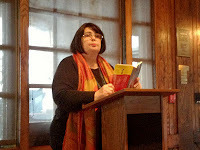 The interesting thing about reading at HVWC is that trains are still pulling in and out of the station in the background as you read. It sounds disruptive, but it actually was not. It added a bit of idiosyncratic charm to the evening. I had been asked to read poetry, which was a treat for me since I’m usually expected to read or talk about my novels right now. The audience was very engaged and receptive.
The interesting thing about reading at HVWC is that trains are still pulling in and out of the station in the background as you read. It sounds disruptive, but it actually was not. It added a bit of idiosyncratic charm to the evening. I had been asked to read poetry, which was a treat for me since I’m usually expected to read or talk about my novels right now. The audience was very engaged and receptive. 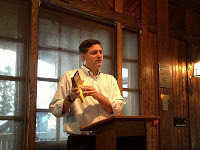 After my reading, Sergio gave a powerful talk and reading from the book of essays he recently co-edited with Sarah Cortez, Our Lost Border. This is a link to a video of a similat talk and reading Sergio gave to a school several weeks later. Though the two readings might sound disparate, they actually meshed well. After Sergio finished reading, we answered questions and had a passionate discussion with the audience for some time before we finished up with a book signing.
After my reading, Sergio gave a powerful talk and reading from the book of essays he recently co-edited with Sarah Cortez, Our Lost Border. This is a link to a video of a similat talk and reading Sergio gave to a school several weeks later. Though the two readings might sound disparate, they actually meshed well. After Sergio finished reading, we answered questions and had a passionate discussion with the audience for some time before we finished up with a book signing.Then, Sergio and Laura took us out to dinner at a lovely restaurant with wonderful Mediterranean food in nearby Tarrytown called Chiboust where we sat and ate, talked, and drank until we closed the place down. What a lovely evening with such congenial and personable hosts! At the end of the evening, seeing how exhausted everyone was, Sergio dropped Laura off at their apartment in the Upper West Side of Manhattan and drove Ben and me all the way back to our hotel in Brooklyn, causing him another long drive back to his garage and walk to his apartment back in Manhattan. Kindness personified.
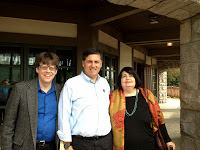 Monday morning, Ben drove us out of Brooklyn and Manhattan, discovering an interesting phenomenon. Coming into Manhattan, the charge for the Holland Tunnel is $13.00. Driving back out of Manhattan, there is no charge. They really would rather you didn’t come into the city, it seems. We took the same road back west because any other route would add so many miles and hours to our travels. But we encountered more of the frustrating delays on the Pennsylvania turnpike, and once off, we could not find a hotel or motel for the night. They were all full of construction workers for all the road construction going on. We learned that they were running three shifts on the road construction, and most of the men (and some women) working were from out of town, the majority from Texas. It grew later and later as we drove, desperate for a place for the night and worn to a frazzle, until finally one hotel had one deluxe suite (at a much higher cost than we would have chosen to pay) still available. I snatched it up, and as we headed to the room to unpack the car, we passed two more families pulling up to try to find a room in the dark. We drove sixteen hours the next day to finally reach our home, and I could hardly walk when we got in.
Monday morning, Ben drove us out of Brooklyn and Manhattan, discovering an interesting phenomenon. Coming into Manhattan, the charge for the Holland Tunnel is $13.00. Driving back out of Manhattan, there is no charge. They really would rather you didn’t come into the city, it seems. We took the same road back west because any other route would add so many miles and hours to our travels. But we encountered more of the frustrating delays on the Pennsylvania turnpike, and once off, we could not find a hotel or motel for the night. They were all full of construction workers for all the road construction going on. We learned that they were running three shifts on the road construction, and most of the men (and some women) working were from out of town, the majority from Texas. It grew later and later as we drove, desperate for a place for the night and worn to a frazzle, until finally one hotel had one deluxe suite (at a much higher cost than we would have chosen to pay) still available. I snatched it up, and as we headed to the room to unpack the car, we passed two more families pulling up to try to find a room in the dark. We drove sixteen hours the next day to finally reach our home, and I could hardly walk when we got in.After a day and a half of recuperation, we set out again for events in Kansas, culminating in a Hispanic Heritage Month celebration at the Wichita, KS, Public Library. I love to do events at libraries. Librarians are my heroes and have been since I was a child hiding out among the books from my dysfunctional home. It’s always so much fun to meet and talk with not only the librarians but with the regular patrons and supporters of the library.
Once back, it was time for the national teleconference with Las Comadres National Latino Book Club. I was fortunate enough to have Every Broken Trust selected as the September book for the NLBC to read, and gatherings all around the country had been reading and discussing it. I had met the leader of the New York City group at the Brooklyn Book Festival—that group had live-tweeted their meeting and discussion, which was great fun. Nora Comstock, the incredible founder and CEO of Las Comadres, interviewed me for the teleconference with intelligent and insightful questions. Some of the hundreds of Las Comadres who were listening had asked questions, and Nora asked those of me, as well. Anyone who despairs of what’s happening to reading in America and who believes that no one reads anymore—or not for anything but the crudest escape—should listen to the Comadres and the perceptive, thoughtful questions they asked of me. They’ll post the tape of the interview to their website at http://www.lascomadres.org/lco/lco-eng/events/reading_with/2013/book0913.htmlwhen they have it ready. (I don’t believe it’s up yet.)
I had a wonderful time in my travels, but I’m oh so glad to be back home. I have a book to write, but I have to put it on hold since my copy edits just came in for Every Hidden Fear, the third Skeet Bannion novel. Time is absolutely whizzing past. But now, I settle into the boring life of a writer who’s not on the road, a life of writing, revising, writing, revising, and not much else. Hurray!
NOTE: Blogger is not letting me comment on my some reason, so if you don't get an immediate reply to your comment, that's why. I'm working on it, but unfortunately Blogger isn't.
Coming later this week, a 2-part Literary Mystery Novelists blog featuring Julia Spencer-Fleming and her forthcoming book, Through the Evil Days.
Published on October 12, 2013 21:55
October 8, 2013
Part I--Road Trips, the Brooklyn Book Festival, the Hudson Valley Writers Center, and Wichita Public Library
I’ve neglected this blog for weeks because I’ve been on cross-country road trips promoting my newest novel, Every Broken Trust. With my trusty husband as companion, I’ve been to Illinois, Indiana, West Virginia, Pennsylvania, New Jersey, New York, Missouri, and Kansas in the past few weeks and am just finally getting caught up enough after all the traveling to be able to blog about it. (Not to mention the fact that I just stupidly overwrote a carefully written and edited long blog post, which will have to be replaced with a hastily written, probably never-as-good new post.) After the two parts of my travel posts, however, I hope to resume my normal blogging schedule and plan to have some more posts in both of my popular series, “Books of Interest by Writers of Color” and “Literary Mystery Novelists.”
 When we rented the car in which we would set out on our journey, the rental agent asked us if we minded a car with Texas plates “Since many people do.” I’m not a fan of Texas’s governor or legislature, but I have too many wonderful Tejas friends to dismiss the entire state. So we took the very nice car, shaking our heads because it seemed impossible to get away from politics in anything anymore.
When we rented the car in which we would set out on our journey, the rental agent asked us if we minded a car with Texas plates “Since many people do.” I’m not a fan of Texas’s governor or legislature, but I have too many wonderful Tejas friends to dismiss the entire state. So we took the very nice car, shaking our heads because it seemed impossible to get away from politics in anything anymore.
We packed a cooler of food and drinks in the car since we were trying to make the more than 1200-mile journey in time to attend a Friday evening reception for Brooklyn Book Festival Latino authors at La Casa Azul Bookstore in Manhattan. I knew we had to keep to the speed limit throughout the trip and keep our stops to the minimum in order to make it in time. So the long drive that could have been a vacation of sorts gained a lot more pressure and stress with that deadline facing us.

We motored from Kansas City at the western end of Missouri to St. Louis at the eastern with no problem. We knew the territory, and there was almost no road construction. Illinois had us worried because we had encountered hours of road-construction delay earlier in the summer when we went to Killer Nashville, but this trip went further north where it was not only more scenic but had little of the dread orange barrels and work-zone reduced speed limits. Indiana was even more scenic and had only slightly more construction zones, so by the time we stopped for the night in Terre Haute, we were right on schedule and feeling good, if tired.
Indiana grew more mountainous and beautiful as we approached Pennsylvania and the tiny corner of West Virginia we had to pass through before entering Pennsylvania, and roadwork became more common. We were climbing steeply into the Appalachians. The moment we crossed into Pennsylvania and hit the Pennsylvania Turnpike, though, traffic ground to a halt due to heavy road construction, steep winding mountain roads, the largest number of extra-wide tractor-trailer loads I’ve ever seen, and lots and lots of traffic.
 We were in the midst of the gorgeous Laurel Highlands of Pennsylvania, which thousands of tourists travel to see every year, and we had a great view as we drove along at ten to twenty miles an hour—and sometimes sat in one spot for ten minutes or more. I had planned for us to stop for the night in Allentown, Pennsylvania, out of the mountains and an easy morning’s drive through New Jersey and into New York City, but we had to stop at eight o’clock that evening when they began even heavier night construction on the roads. A nice pilot-truck driver told us not to even try to run through at night, and we lucked into the last hotel room in one of the few stops on the Turnpike, still well in the mountains and many miles from Allentown. The next morning we started early and hoped to make up lost time along the way, but that hope was wrecked by a tractor-trailer accident that could have been cleared quickly at home, but took over an hour in the mountains. And of course, the heavy road construction continued all the way through Pennsylvania. No one was ever so glad to see New Jersey as we finally were.
We were in the midst of the gorgeous Laurel Highlands of Pennsylvania, which thousands of tourists travel to see every year, and we had a great view as we drove along at ten to twenty miles an hour—and sometimes sat in one spot for ten minutes or more. I had planned for us to stop for the night in Allentown, Pennsylvania, out of the mountains and an easy morning’s drive through New Jersey and into New York City, but we had to stop at eight o’clock that evening when they began even heavier night construction on the roads. A nice pilot-truck driver told us not to even try to run through at night, and we lucked into the last hotel room in one of the few stops on the Turnpike, still well in the mountains and many miles from Allentown. The next morning we started early and hoped to make up lost time along the way, but that hope was wrecked by a tractor-trailer accident that could have been cleared quickly at home, but took over an hour in the mountains. And of course, the heavy road construction continued all the way through Pennsylvania. No one was ever so glad to see New Jersey as we finally were.
Consequently, we pulled up to our Brooklyn hotel at the time the reception was supposed to begin at La Casa Azul Bookstore. A quick calculation told me that, aside from our exhaustion and bedraggled appearances, if we grabbed the next subway into Manhattan, we’d still arrive after the reception was over. So I called to let them know that we couldn’t make it to the reception, after all. A bitter disappointment since many of friends I don’t get a chance to see often were going to attend. On the up side, though, Ben had driven us through Manhattan and Brooklyn at rush hour with no problems whatever. Quite an accomplishment! He joked that people saw the Texas license plate, thought he was packing an arsenal, and avoided him. We were pleasantly surprised by the amenities and quality of our inexpensive Brooklyn hotel, as well. We were so tired, though, that we just ate sandwiches out of our trusty cooler and went to bed.
Saturday, we rode the L train into Manhattan to meet my wonderful friend and agent, Ellen Geiger, for brunch in Greenwich Village. We had arranged to meet her at Union Square, which was a kaleidoscope of live musicians, tourists from countries all over the world, magicians and jugglers, dogwalkers (who knew there were so many big dogs in NYC?), shoppers, weekend strollers, and a huge greenmarket. Ellen took us to a Brazilian coffee shop with delicious food and a live band playing Brazilian music. We had a great time catching up on personal stuff and talking about books, writing, and publishing. After we finished, she took us on a tour of the really huge greenmarket, and at a Catskills merino sheep farm’s booth, I promised to teach her how to spin wool into yarn. We finally parted from dear Ellen and took the L line back into Brooklyn. On our way from the subway stop to the hotel, we stopped in a hole-in-the-wall restaurant, Atlantic Alabama Aaron’s Café, desperate for something to drink. Intrigued by their interesting Caribbean-Asian menu and soothed by the staff’s kindness, we ended up buying a wonderful supper and taking back incredibly delicious food for breakfast the next morning.

Sunday, I was on the earliest panel at the Brooklyn Book Festival and wanted to be sure to be on time. I wasn’t sure I’d make it safely to the festival from my hotel since my cab driver couldn’t find the address and ended up driving while wearing his reading glasses so he could decipher his cell phone’s GPS. But he managed to deliver Ben and me safe and sound to St. Francis College where my 10:00 a.m. panel was to take place. After a weeklong series of over 60 “Bookend” events from Sept. 16 – 22, the Brooklyn Book Festival on Sunday consisted of 90-plus panels, readings and workshops spread across 14 stages. Among the venues were Brooklyn Borough Hall and Plaza, Columbus Park, Brooklyn Law School, St. Francis College, the Brooklyn Historical Society, and St. Ann & the Holy Trinity Church.
I was to meet with other panel members and our moderator in the “green room,” but didn’t have a location for that, so Ben and I wandered lost through St. Francis College because the festival hadn’t started yet. In our wandering, we saw another woman, looking as lost as we did, and I told Ben I’d bet she was another writer looking for the green room. Sure enough, once we finally located the green room, that woman was the only person there. In a lovely surprise, she turned out to be novelist Caroline Leavitt, who I knew online and through her work, but had never met in person. We had a lively conversation as more festival staff, writers, and moderators filed into the room, and Caroline and Ben commiserated about the pangs of empty-nest syndrome. Soon enough, though, Caroline was led off to her panel at the Brooklyn Historical Society, and my panel and I were led into our seminar room past people lined up waiting to be allowed in to hear us.
On this panel called “Six Degrees of Separation,” Meredith Walters of the Brooklyn Public Library moderated Brooklyn poet laureate Tina Chang, historical novelist Ray Robertson, memoirist Leigh Newman, and me as we read from our work and then discussed the similarities and differences in process between the different genres of writing. The conversation ranged across the topics of voice, setting, and characters/personae. In spite of our differences, we found ourselves agreeing with and learning from each other as we examined the process of writing. Before we knew it, our time was up and we were hurried on to the book signing table while another panel of authors was led into the room and more literary fans lined up to get in to that session.
 New York City's largest free literary event offered a long list of lectures, conversations and presentations at fourteen different locations. Sunday afternoon presentations included famous authors with Brooklyn connections, such as Edwidge Danticat, Pete Hamill, Colum McCann, Art Spiegelman and George Packer. More than 45,000 people attended the festival, and 200 stalls sprawled across three blocks in the heart of downtown Brooklyn, representing a cross-section of independent bookstores, independent presses and magazines. At times, the crowd was so packed it was difficult to move.
New York City's largest free literary event offered a long list of lectures, conversations and presentations at fourteen different locations. Sunday afternoon presentations included famous authors with Brooklyn connections, such as Edwidge Danticat, Pete Hamill, Colum McCann, Art Spiegelman and George Packer. More than 45,000 people attended the festival, and 200 stalls sprawled across three blocks in the heart of downtown Brooklyn, representing a cross-section of independent bookstores, independent presses and magazines. At times, the crowd was so packed it was difficult to move.
But Ben and I had a full day ahead with more readings out in the heart of the festival and ending with a trip out to Sleepy Hollow, New York, for a reading with dear friend Sergio Troncoso. More about all of that in Part II.
 When we rented the car in which we would set out on our journey, the rental agent asked us if we minded a car with Texas plates “Since many people do.” I’m not a fan of Texas’s governor or legislature, but I have too many wonderful Tejas friends to dismiss the entire state. So we took the very nice car, shaking our heads because it seemed impossible to get away from politics in anything anymore.
When we rented the car in which we would set out on our journey, the rental agent asked us if we minded a car with Texas plates “Since many people do.” I’m not a fan of Texas’s governor or legislature, but I have too many wonderful Tejas friends to dismiss the entire state. So we took the very nice car, shaking our heads because it seemed impossible to get away from politics in anything anymore.We packed a cooler of food and drinks in the car since we were trying to make the more than 1200-mile journey in time to attend a Friday evening reception for Brooklyn Book Festival Latino authors at La Casa Azul Bookstore in Manhattan. I knew we had to keep to the speed limit throughout the trip and keep our stops to the minimum in order to make it in time. So the long drive that could have been a vacation of sorts gained a lot more pressure and stress with that deadline facing us.

We motored from Kansas City at the western end of Missouri to St. Louis at the eastern with no problem. We knew the territory, and there was almost no road construction. Illinois had us worried because we had encountered hours of road-construction delay earlier in the summer when we went to Killer Nashville, but this trip went further north where it was not only more scenic but had little of the dread orange barrels and work-zone reduced speed limits. Indiana was even more scenic and had only slightly more construction zones, so by the time we stopped for the night in Terre Haute, we were right on schedule and feeling good, if tired.
Indiana grew more mountainous and beautiful as we approached Pennsylvania and the tiny corner of West Virginia we had to pass through before entering Pennsylvania, and roadwork became more common. We were climbing steeply into the Appalachians. The moment we crossed into Pennsylvania and hit the Pennsylvania Turnpike, though, traffic ground to a halt due to heavy road construction, steep winding mountain roads, the largest number of extra-wide tractor-trailer loads I’ve ever seen, and lots and lots of traffic.
 We were in the midst of the gorgeous Laurel Highlands of Pennsylvania, which thousands of tourists travel to see every year, and we had a great view as we drove along at ten to twenty miles an hour—and sometimes sat in one spot for ten minutes or more. I had planned for us to stop for the night in Allentown, Pennsylvania, out of the mountains and an easy morning’s drive through New Jersey and into New York City, but we had to stop at eight o’clock that evening when they began even heavier night construction on the roads. A nice pilot-truck driver told us not to even try to run through at night, and we lucked into the last hotel room in one of the few stops on the Turnpike, still well in the mountains and many miles from Allentown. The next morning we started early and hoped to make up lost time along the way, but that hope was wrecked by a tractor-trailer accident that could have been cleared quickly at home, but took over an hour in the mountains. And of course, the heavy road construction continued all the way through Pennsylvania. No one was ever so glad to see New Jersey as we finally were.
We were in the midst of the gorgeous Laurel Highlands of Pennsylvania, which thousands of tourists travel to see every year, and we had a great view as we drove along at ten to twenty miles an hour—and sometimes sat in one spot for ten minutes or more. I had planned for us to stop for the night in Allentown, Pennsylvania, out of the mountains and an easy morning’s drive through New Jersey and into New York City, but we had to stop at eight o’clock that evening when they began even heavier night construction on the roads. A nice pilot-truck driver told us not to even try to run through at night, and we lucked into the last hotel room in one of the few stops on the Turnpike, still well in the mountains and many miles from Allentown. The next morning we started early and hoped to make up lost time along the way, but that hope was wrecked by a tractor-trailer accident that could have been cleared quickly at home, but took over an hour in the mountains. And of course, the heavy road construction continued all the way through Pennsylvania. No one was ever so glad to see New Jersey as we finally were.Consequently, we pulled up to our Brooklyn hotel at the time the reception was supposed to begin at La Casa Azul Bookstore. A quick calculation told me that, aside from our exhaustion and bedraggled appearances, if we grabbed the next subway into Manhattan, we’d still arrive after the reception was over. So I called to let them know that we couldn’t make it to the reception, after all. A bitter disappointment since many of friends I don’t get a chance to see often were going to attend. On the up side, though, Ben had driven us through Manhattan and Brooklyn at rush hour with no problems whatever. Quite an accomplishment! He joked that people saw the Texas license plate, thought he was packing an arsenal, and avoided him. We were pleasantly surprised by the amenities and quality of our inexpensive Brooklyn hotel, as well. We were so tired, though, that we just ate sandwiches out of our trusty cooler and went to bed.
Saturday, we rode the L train into Manhattan to meet my wonderful friend and agent, Ellen Geiger, for brunch in Greenwich Village. We had arranged to meet her at Union Square, which was a kaleidoscope of live musicians, tourists from countries all over the world, magicians and jugglers, dogwalkers (who knew there were so many big dogs in NYC?), shoppers, weekend strollers, and a huge greenmarket. Ellen took us to a Brazilian coffee shop with delicious food and a live band playing Brazilian music. We had a great time catching up on personal stuff and talking about books, writing, and publishing. After we finished, she took us on a tour of the really huge greenmarket, and at a Catskills merino sheep farm’s booth, I promised to teach her how to spin wool into yarn. We finally parted from dear Ellen and took the L line back into Brooklyn. On our way from the subway stop to the hotel, we stopped in a hole-in-the-wall restaurant, Atlantic Alabama Aaron’s Café, desperate for something to drink. Intrigued by their interesting Caribbean-Asian menu and soothed by the staff’s kindness, we ended up buying a wonderful supper and taking back incredibly delicious food for breakfast the next morning.

Sunday, I was on the earliest panel at the Brooklyn Book Festival and wanted to be sure to be on time. I wasn’t sure I’d make it safely to the festival from my hotel since my cab driver couldn’t find the address and ended up driving while wearing his reading glasses so he could decipher his cell phone’s GPS. But he managed to deliver Ben and me safe and sound to St. Francis College where my 10:00 a.m. panel was to take place. After a weeklong series of over 60 “Bookend” events from Sept. 16 – 22, the Brooklyn Book Festival on Sunday consisted of 90-plus panels, readings and workshops spread across 14 stages. Among the venues were Brooklyn Borough Hall and Plaza, Columbus Park, Brooklyn Law School, St. Francis College, the Brooklyn Historical Society, and St. Ann & the Holy Trinity Church.
I was to meet with other panel members and our moderator in the “green room,” but didn’t have a location for that, so Ben and I wandered lost through St. Francis College because the festival hadn’t started yet. In our wandering, we saw another woman, looking as lost as we did, and I told Ben I’d bet she was another writer looking for the green room. Sure enough, once we finally located the green room, that woman was the only person there. In a lovely surprise, she turned out to be novelist Caroline Leavitt, who I knew online and through her work, but had never met in person. We had a lively conversation as more festival staff, writers, and moderators filed into the room, and Caroline and Ben commiserated about the pangs of empty-nest syndrome. Soon enough, though, Caroline was led off to her panel at the Brooklyn Historical Society, and my panel and I were led into our seminar room past people lined up waiting to be allowed in to hear us.
On this panel called “Six Degrees of Separation,” Meredith Walters of the Brooklyn Public Library moderated Brooklyn poet laureate Tina Chang, historical novelist Ray Robertson, memoirist Leigh Newman, and me as we read from our work and then discussed the similarities and differences in process between the different genres of writing. The conversation ranged across the topics of voice, setting, and characters/personae. In spite of our differences, we found ourselves agreeing with and learning from each other as we examined the process of writing. Before we knew it, our time was up and we were hurried on to the book signing table while another panel of authors was led into the room and more literary fans lined up to get in to that session.
 New York City's largest free literary event offered a long list of lectures, conversations and presentations at fourteen different locations. Sunday afternoon presentations included famous authors with Brooklyn connections, such as Edwidge Danticat, Pete Hamill, Colum McCann, Art Spiegelman and George Packer. More than 45,000 people attended the festival, and 200 stalls sprawled across three blocks in the heart of downtown Brooklyn, representing a cross-section of independent bookstores, independent presses and magazines. At times, the crowd was so packed it was difficult to move.
New York City's largest free literary event offered a long list of lectures, conversations and presentations at fourteen different locations. Sunday afternoon presentations included famous authors with Brooklyn connections, such as Edwidge Danticat, Pete Hamill, Colum McCann, Art Spiegelman and George Packer. More than 45,000 people attended the festival, and 200 stalls sprawled across three blocks in the heart of downtown Brooklyn, representing a cross-section of independent bookstores, independent presses and magazines. At times, the crowd was so packed it was difficult to move. But Ben and I had a full day ahead with more readings out in the heart of the festival and ending with a trip out to Sleepy Hollow, New York, for a reading with dear friend Sergio Troncoso. More about all of that in Part II.
Published on October 08, 2013 15:06
September 14, 2013
A Bonded Pair
A Facebook post by a friend left me remembering these former pets fondly and turning to a post I wrote last year on The Stiletto Gang blog about them. I thought I'd share it again here on my home blog.

Tragedy brought me Bonnie, a 13-year-old cat who was as tiny as a kitten, first. Her owner was my almost-brother. Steve was my little brother’s best friend. They’d lived with my husband and me briefly, and when they moved out, they rented a house just a few blocks away and continued to eat supper at our house every night. Once my brother married and moved out of town, Steve kept coming to our house for holidays or any time he needed family support. Steve was a shy geek with a warm heart. One day, someone tied a litter of five kittens in a plastic bag and dumped them in the middle of the street to be run over. Steve found them, took them to the vet, and spayed and neutered them. Thirteen years later early on a Sunday morning, Steve was killed by a hit-and-run driver, leaving five old cats in his house waiting for him to come home.
His friends gathered and parceled out the cats among us. I already had two elderly cats and a young one, all rescues, at home, but when no one would step forward for Bonnie, the runt of the litter, I took her. Within a week, several of the littermates turned out to have liver cancer and had to be put to sleep. Over the course of the next year, this happened to all of them, except tiny Bonnie.
From the first, Bonnie hid. One of her favorite places was behind the refrigerator. She had a bell on her collar, and once the lights were out and we were in bed, we would hear her venturing forth. It took me so long to get her to venture forth voluntarily and sit on my lap to be petted, but once there, she decided that was where she always wanted to be. If I were doing some chore around the house and not paying attention to her, she would wind around my legs, scolding me.
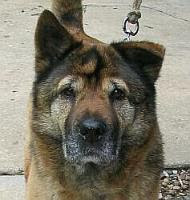
Shortly after we took Bonnie into our home, we ended up rescuing a beautiful seven-year-old Shar Pei/Husky mix. We took Mina on what would have been the last day of her life otherwise. When we brought her into our house, all the cats fled, except Bonnie. I was set to try to gradually introduce them to each other when Bonnie walked straight up to Mina, who was giant in comparison, and touched noses. From that second, they were the best of friends, never apart.
Bonnie was the dominant member of the pair, though. She would go nibble a few pieces of Mina’s dog kibble, and Mina was then allowed to eat some of Bonnie’s food. They made a point to drink out of each other’s water bowls also. At night, Mina would curl into a circle, and Bonnie would curl up within its center. Mina showed affection by licking Bonnie as if she were a puppy, and Bonnie tolerated it. Mina would bark at suspicious noises at night, and Bonnie would stand behind her, mimicking her stiff-legged posture and give the best imitations of a bark you ever heard from a cat.
Then, Bonnie started eating less and having bouts of loud crying that could only be assuaged by my holding her and petting or by Mina licking her. When I took her to the vet, the word was that the deadly liver cancer had finally hit this last living member of that five-cat litter. We think she held the cancer at bay for those almost four years by sheer strength of personality. She was finally somewhere where she wasn’t the bullied runt—and we’d even found her a giant pet! She wasn’t about to die when things were finally going so well for her.
Unfortunately, there wasn’t much to be done. As she got sicker, she cried more. Until Mina would wash Bonnie with her big tongue, leaving her looking like a little drowned rat. But she was always at peace and purring when Mina licked her or I held her. The vet said we’d know when to bring her in one last time, and that point became clear one day. We packed her carry-crate with lots of blankets and soft fabric because she was so bony by then. Mina was licking her one last time. At the vet’s, Bonnie lay in my lap, purring, as she slipped away peacefully.
Mina was disconsolate for months and then rallied to remain our wonderful friend for five more years before she left us the same way. We laugh when we think of the surprise and joy those two friends must have felt when their spirits encountered each other again. It’s a comfort to think of them curled around each other at night as they were for so many nights in our house—a true bonded pair.

Tragedy brought me Bonnie, a 13-year-old cat who was as tiny as a kitten, first. Her owner was my almost-brother. Steve was my little brother’s best friend. They’d lived with my husband and me briefly, and when they moved out, they rented a house just a few blocks away and continued to eat supper at our house every night. Once my brother married and moved out of town, Steve kept coming to our house for holidays or any time he needed family support. Steve was a shy geek with a warm heart. One day, someone tied a litter of five kittens in a plastic bag and dumped them in the middle of the street to be run over. Steve found them, took them to the vet, and spayed and neutered them. Thirteen years later early on a Sunday morning, Steve was killed by a hit-and-run driver, leaving five old cats in his house waiting for him to come home.
His friends gathered and parceled out the cats among us. I already had two elderly cats and a young one, all rescues, at home, but when no one would step forward for Bonnie, the runt of the litter, I took her. Within a week, several of the littermates turned out to have liver cancer and had to be put to sleep. Over the course of the next year, this happened to all of them, except tiny Bonnie.
From the first, Bonnie hid. One of her favorite places was behind the refrigerator. She had a bell on her collar, and once the lights were out and we were in bed, we would hear her venturing forth. It took me so long to get her to venture forth voluntarily and sit on my lap to be petted, but once there, she decided that was where she always wanted to be. If I were doing some chore around the house and not paying attention to her, she would wind around my legs, scolding me.

Shortly after we took Bonnie into our home, we ended up rescuing a beautiful seven-year-old Shar Pei/Husky mix. We took Mina on what would have been the last day of her life otherwise. When we brought her into our house, all the cats fled, except Bonnie. I was set to try to gradually introduce them to each other when Bonnie walked straight up to Mina, who was giant in comparison, and touched noses. From that second, they were the best of friends, never apart.
Bonnie was the dominant member of the pair, though. She would go nibble a few pieces of Mina’s dog kibble, and Mina was then allowed to eat some of Bonnie’s food. They made a point to drink out of each other’s water bowls also. At night, Mina would curl into a circle, and Bonnie would curl up within its center. Mina showed affection by licking Bonnie as if she were a puppy, and Bonnie tolerated it. Mina would bark at suspicious noises at night, and Bonnie would stand behind her, mimicking her stiff-legged posture and give the best imitations of a bark you ever heard from a cat.
Then, Bonnie started eating less and having bouts of loud crying that could only be assuaged by my holding her and petting or by Mina licking her. When I took her to the vet, the word was that the deadly liver cancer had finally hit this last living member of that five-cat litter. We think she held the cancer at bay for those almost four years by sheer strength of personality. She was finally somewhere where she wasn’t the bullied runt—and we’d even found her a giant pet! She wasn’t about to die when things were finally going so well for her.
Unfortunately, there wasn’t much to be done. As she got sicker, she cried more. Until Mina would wash Bonnie with her big tongue, leaving her looking like a little drowned rat. But she was always at peace and purring when Mina licked her or I held her. The vet said we’d know when to bring her in one last time, and that point became clear one day. We packed her carry-crate with lots of blankets and soft fabric because she was so bony by then. Mina was licking her one last time. At the vet’s, Bonnie lay in my lap, purring, as she slipped away peacefully.
Mina was disconsolate for months and then rallied to remain our wonderful friend for five more years before she left us the same way. We laugh when we think of the surprise and joy those two friends must have felt when their spirits encountered each other again. It’s a comfort to think of them curled around each other at night as they were for so many nights in our house—a true bonded pair.
Published on September 14, 2013 22:03
September 10, 2013
Losing a Great Warrior for Writers
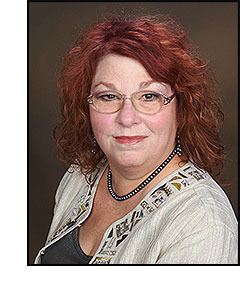
A.C. (Ann) Crispin died over the weekend after a long battle with cancer. She was a well-known science fiction writer, so if you’re a science fiction reader, as I am, you’ll know of her work. She was also a mentor to a number of aspiring writers who are now published and on various stages of the journey to become well-known writers in the field themselves. But Crispin’s death is a loss to more than the community of science fiction readers and writers.
She was one of the founders of Writer Beware, a site I constantly recommend to writers. Sponsored by Science Fiction Writers of America (SFWA) and Mystery Writers of America (MWA), Crispin, Victoria Strauss, and Richard C. White have worked long and hard building a site and service that researches and identifies scammers and fly-by-night agents, editors, publishers, and publicists that rip off or exploit authors and aspiring writers. Writer Beware tries to find ways to fix problems with these exploiters for authors where they can. They also do a great job of educating writers about what are unprofessional, shady, and often illegal business practices and what are the model professional practices of reputable agents, editors, publishers, and publicists. And they do it all without pay or even accepting donations.

I strongly and forcefully recommend Writer Beware to all of my students and have been known to do this quite passionately on this blog, as well. Writer Beware is a true necessity for emerging writers who don’t really know or understand the business of publishing yet. These are the most vulnerable writers, and Writer Beware has been their bodyguard on the publishing battlefield.
I think it’s a tremendous service to the literary community that Crispin and her colleagues have provided over the years. I have used it and avoided years of heartache. I have helped friends use it and seen firsthand how easily even a bright, well-educated person can fall into trouble when unscrupulous people are willing to deceive and tell outright lies publicly. These friends are all big supporters of Writer Beware now, too.
Last year, one book promotion agency put up a great-looking website with testimonials from major writers and their photos with the quotes about how well this business had worked for them. It looked totally legitimate. The only problem was that those writers had never heard of the business, never used it, never said or wrote those testimonials, and never given permission to have their names and photos used. It was all a total lie. It might have taken in anyone. Writer Beware did the research and contacted authors with listed testimonials (because they’ve seen a lot of scammers and know how brazen they can sometimes be). That blew the lid off that one—and kept people from paying thousands of hard-earned dollars to thieves and fraudsters.
While Crispin lay near death, some of the bad guys she’d defended writers against, who in the past have settled for posting lots of outright lies about Writer Beware, were having a ghoulish celebratory party on Twitter. (Thanks to Jim C. Hines for this screen capture.)
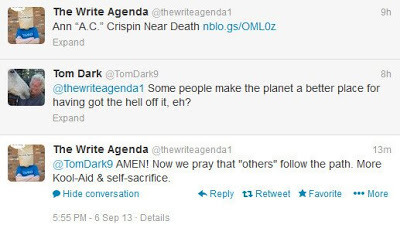 Strauss posted this the morning Crispin died: “Ann Crispin, best-selling author, Writer Beware co-founder, fearless fighter in the scam wars, beloved wife and mother, my friend, died this morning after a two-year struggle with cancer. I'll write a memorial for her later on--right now, I don't have the words. In the meantime, Tor.com has posted an obituary.
Strauss posted this the morning Crispin died: “Ann Crispin, best-selling author, Writer Beware co-founder, fearless fighter in the scam wars, beloved wife and mother, my friend, died this morning after a two-year struggle with cancer. I'll write a memorial for her later on--right now, I don't have the words. In the meantime, Tor.com has posted an obituary.Ann's death is a huge blow, personally and professionally. But to all you writers, readers, and subscribers (and scammers): know that Writer Beware will NOT be going dark, slowing down, or otherwise pausing in its work. We're here for the long haul. Please honor Ann's memory, and her work, by reading her books and spreading the word about Writer Beware.”
Strauss had intended to let the Writer Beware blog rest for a week as they dealt with their grief at losing a good friend and staunch comrade, but when she learned of the Twitter trolls shown above, she got right back to work as the best way to honor Crispin’s memory. http://accrispin.blogspot.com/
When we writers die, about the best we can ask of our lives is that we wrote some good books and that we made the world slightly better in some way for someone. Ann Crispin wrote good books, and she labored long and hard to make the world a better and safer place for other writers. We’ve lost a true warrior who fought long and hard for every one of us. She deserves great honor throughout the community of writers everywhere.
Published on September 10, 2013 13:59



